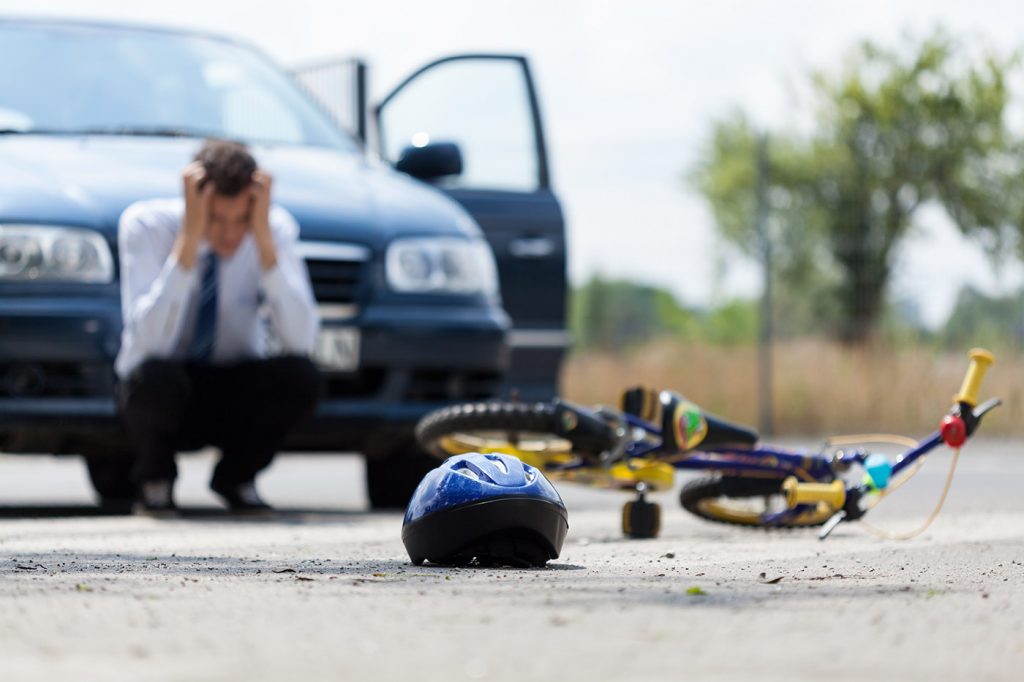
The world is a chaotic place, and sometimes worst-case scenarios become a reality in an instant. Your child might, for instance, be struck by a vehicle while riding a bike. This incident – a parent’s worst nightmare – requires a certain amount of gravitas and composure. For this reason, it’s a good idea to be prepared. The following will outline some steps you can take in the immediate aftermath of a collision. We will also touch on some basic preventative measures that you can forward to your child before they venture out on their bicycle.
Getting Medical Attention
To begin with, if your child is in serious need of medical attention, your best bet is to call an ambulance – or 911. This might take some time, so while you’re waiting, you want to do your best to get your child in a stable position. Any unnecessary movements could put stress on the wound and exacerbate your child’s condition. If, for example, your child is experiencing immense pain in their spine, you want to limit any lateral movement – from side to side. To do this, you can place thick towels on either side of your child’s neck.
Generally speaking, you want to be an emotional anchor for your child, offering them comfort in this trying time. If your child is not extremely hurt, you may be able to drive them to the hospital yourself, but be wary of any internal injuries.
Once you’ve arrived at the hospital, you want to be as thorough as possible in your description of the event and the resultant injury. This may be difficult if you weren’t there. Your child might be able to fill in the gaps, though this may be difficult if their injury prevents them from doing so.
Collecting Testimony
Ideally, as you go with your kid to the hospital, another party (perhaps the other parent, if there is one) should stay behind to record witness testimony. This is imperative for building a narrative of the event. Having an airtight narrative can help you build a case against the driver, if you choose to do so.
To that end, you (or your partner) should ask questions about the driver’s behavior. Were they distracted at all? Did they apologize after the collision? If they did, this could be used as evidence of their being at-fault. Conversely, you want to find out if your child did anything that could exculpate the driver. For instance, if your kid jumped out in front of the vehicle without warning, this might free the driver of liability.
Evidence
Next, you want to take your time collecting evidence. This could mean taking photos of the surrounding area, noting where the bicycle landed after the accident. You can also take photos of the vehicle, focusing on the part of the car that struck your child. Basically, you want to collect any pictures that directly (or indirectly) relate to the accident.
Though it may seem unsavory, you (and your child) could benefit greatly from photos of the injury. If you end up pursuing compensation, these images can go a long way toward building a case in your favor. Remember, medical expenses (and lost future wages) can greatly affect your bank account. If the driver was at fault, you can avoid spending a lot of money by seeking fair remuneration for damages incurred by the driver’s negligence.
Preventative Measures
Of course, it’s always better to avoid accidents before they happen. To that end, there are a few basic principles to keep in mind whenever you (or your child) are riding a bicycle. First, you want to be sure your children are always wearing a helmet. Kids of a certain age might push back, arguing that headwear detracts from their stylish good looks. Remind them that their lives are at stake. Second, it’s important that your child always follows the rules of the road. It might even be a good idea to review the relevant regulations in your jurisdiction. Third, make sure your child is highly visible when riding – no matter what time of day it is. Bright clothing, flashing lights and wearable reflectors can go a long way. Finally, make sure they’re not riding alone. When they’re with a buddy, they can be more visible, and they can have someone to look out for them.
These are just a few safety precautions to keep in mind when sending your kids out to ride. If you find yourself in the worst-case scenario, remember to seek out medical attention immediately. You may also want to reach out to a skilled car accident attorney. They can guide you through the claims process as you attempt to recover fair compensation for your child’s injuries.















